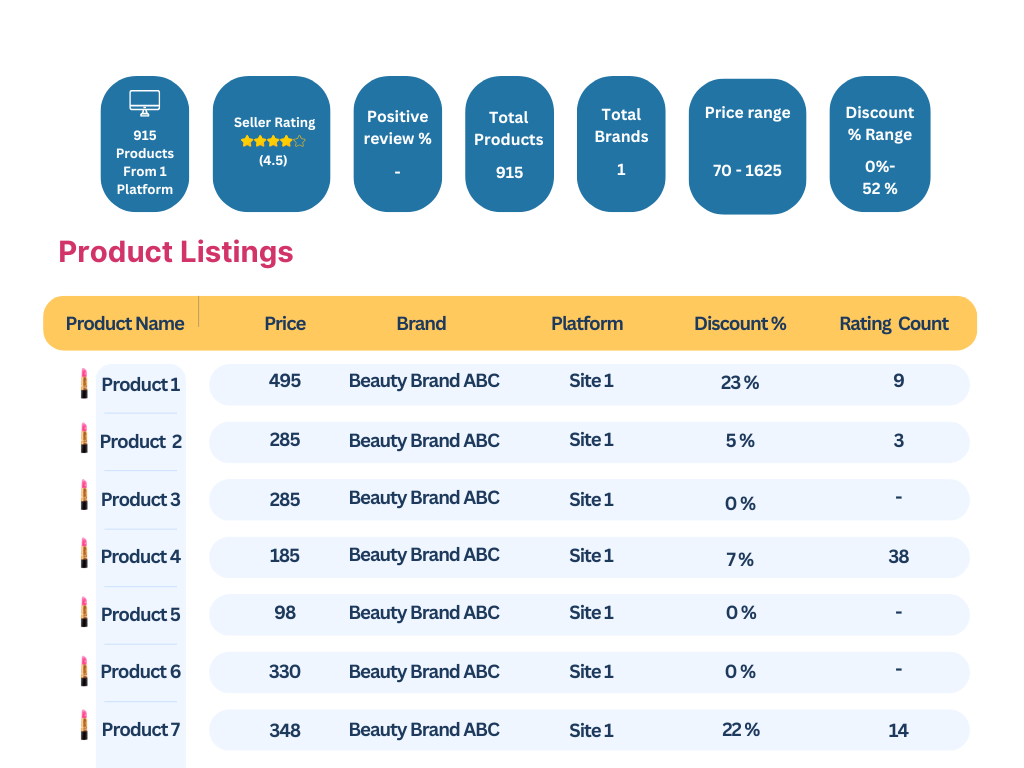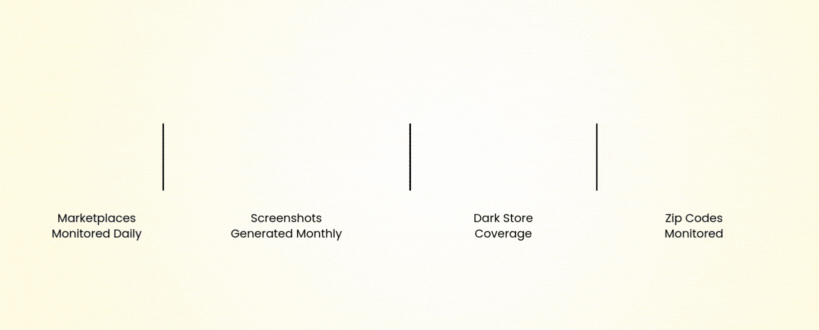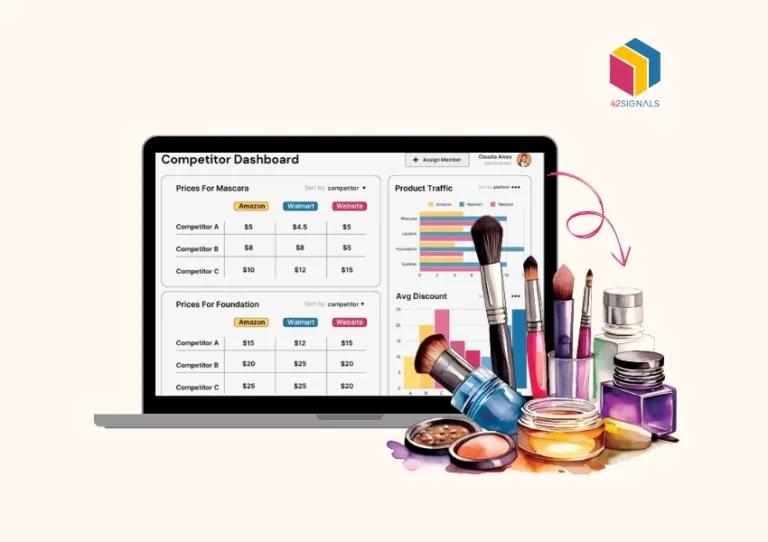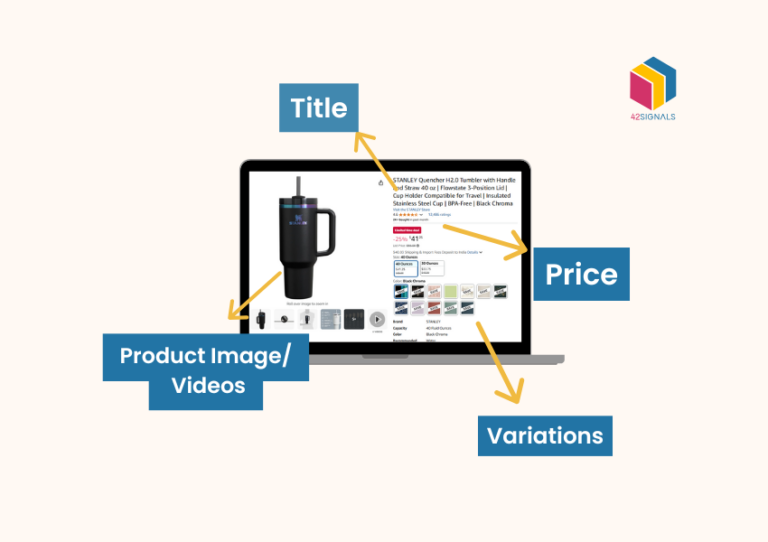E-commerce marketplaces like Amazon, Walmart, and eBay have become dominant channels for retail sales in recent years. In fact, as of 2019, online marketplaces accounted for 46% of all U.S. online sales and a stunning 61% of global e-commerce sales. This rapid growth means brands and manufacturers are increasingly dependent on these platforms to reach customers and need the right sellers. That’s where seller data becomes so important.
Dozens or even hundreds of sellers might be listing the same product, prices can fluctuate by the hour, and product visibility in search results is fiercely contested. In this environment, relying on intuition alone is a recipe for lost sales.

Image Source: Oabeans
By leveraging detailed seller data and performance analytics, companies can make informed adjustments to their strategy in real time, rather than reacting weeks or months too late.
What is Seller Data and Why Does it Matter?

Every transaction and interaction on an e-commerce marketplace generates valuable data. Seller data refers to all the information related to how sellers are performing and behaving on a marketplace. This can include metrics like sales volume, pricing changes, inventory levels, customer ratings, Buy Box win rates, compliance with policies, and more.
Analyzing seller data gives brand owners and category managers a window into what’s happening at the ground level of the marketplace.
- Are certain sellers consistently outperforming others in moving your product?
- Is someone chronically undercutting the minimum price you’ve set?
- Is stock availability an issue for any of your distributors?
These insights live in the data.
Seller data matters because it directly impacts a brand’s success on platforms like Amazon. If authorized sellers are running out of stock or losing the Buy Box to gray-market sellers, your revenue and reputation suffer.
Conversely, if a few sellers are doing exceptionally well, you might funnel more inventory or marketing support their way. In essence, seller data is feedback.
It tells you which strategies are working and which ones need intervention.
The Role of Seller Intelligence in Marketplace Performance
Having raw data is one thing; turning it into actionable insights is another. This is where seller intelligence comes into play. Seller intelligence refers to the practice of using analytics tools and methodologies to interpret seller data and extract meaningful insights.

In practical terms, seller intelligence gives brands a 360° view of their marketplace presence by aggregating data on product assortment, pricing, inventory, and seller behaviors into one coherent picture. Rather than looking at disjointed reports, brands can see all the key performance indicators in one place, often through intuitive dashboards.
This comprehensive view helps identify patterns that might not be obvious at first glance – such as a correlation between certain price points and higher conversion rates, or a particular seller who excels with a specific product line.
One of the major benefits of robust seller intelligence is the ability to identify top-performing sellers and underperformers quickly. By ranking sellers based on sales, growth, customer feedback, and compliance, a brand can pinpoint which partners are contributing most to revenue.
How MAP Violations Affect Pricing Strategy
Pricing strategy in online marketplaces is a delicate balancing act. Brands often establish a Minimum Advertised Price (MAP) to prevent price erosion and maintain a level playing field for all retailers.
A MAP violation occurs when a seller advertises or sells a product below the agreed minimum price. While a lower price might boost that seller’s individual sales in the short term, it can have damaging effects on the broader market. Frequent MAP violations devalue the brand in consumers’ eyes and undercut overall revenue for everyone carrying the product.
When one seller drastically underprices an item, competitors feel pressured to match or beat that price, often kicking off a race to the bottom that erodes profit margins for the entire category. Moreover, authorized dealers who respect your pricing strategy will not appreciate being undersold; it can strain or ruin important business relationships.
From a brand’s perspective, MAP violations are a red flag that must be addressed decisively. The challenge is detection: on a big platform like Amazon, thousands of sellers may be listing products at any given time. Manually policing every listing is impractical. This is why automated MAP monitoring is needed.
E-commerce Dashboards for Actionable Insights

Modern e-commerce analytics platforms provide dashboards that consolidate key performance metrics. Instead of sifting through spreadsheets or disparate reports from each marketplace, a unified dashboard gives you a real-time snapshot of your online business health.
This might include sales performance by product, by seller, or by region, pricing trends, stock levels, search result rankings, advertising ROI, customer reviews sentiment, and more – all side by side.
The beauty of a well-designed e-commerce dashboard is that it turns raw data into a story. Charts, graphs, and heatmaps highlight patterns that might not be obvious from rows of numbers.
For example, a dashboard could quickly reveal if Brand A is losing share to Brand B in a certain category on Amazon or if a particular region is outperforming others in sales.
Features of Effective E-commerce Dashboards
- Sales Performance Tracking: By product, seller, and region.
- Pricing and Stock Alerts: Instant notifications for pricing violations or stockouts.
- Competitor Insights: Benchmarking against rival brands.
- Customer Sentiment Analysis: Monitoring product reviews and ratings.
How 42Signals Enhances Seller Performance and Marketplace Success
We’ve touched on 42Signals throughout this discussion as a prime example of an e-commerce intelligence platform, and for good reason. 42Signals is designed as an all-in-one solution to help brands navigate the complexities of digital marketplaces with ease and precision.
It brings together the various analytics we’ve discussed – seller intelligence, MAP monitoring, digital shelf analytics, competitor analysis, and more – under one roof. By doing so, it eliminates the silos between different data points and gives a truly comprehensive view of your online performance.
Key Capabilities of 42Signals
- Seller Intelligence & MAP Monitoring: Detects and prevents unauthorized resellers and price violations.
- Digital Shelf Analytics: Optimizes product visibility, search rankings, and conversion rates.
- E-commerce Dashboards: Centralizes data for real-time insights and decision-making.
Beyond policing the bad actors, 42Signals also shines a light on opportunities. Its Digital Shelf Analytics capabilities let you dive deep into how your products are performing across e-commerce sites.
You can track your share of search, see how your content compliance stacks up, monitor stock availability, and benchmark against competitors – all within the same platform.
For example, you might discover through 42Signals that a competitor’s product on Amazon has surged ahead of yours in search results because they updated their title or got a burst of positive reviews. Armed with that knowledge (which 42Signals surfaces for you), you can respond by enhancing your own listing or kicking off a targeted marketing campaign.
Conclusion: The Future of Data-Driven E-commerce Strategies
As marketplaces continue to grow and new channels emerge, the volume and velocity of data will only increase. The future points toward even more sophisticated analytics, powered by artificial intelligence and machine learning, to make sense of this data in real time.
We can expect predictive models that forecast demand surges, automated pricing adjustments based on competitive activity, and AI tools that can suggest optimizations to product listings or flag emerging market trends without human prompting.
In this landscape, having a robust system like 42Signals in place is akin to having a co-pilot for your e-commerce business – one that processes information at scale and offers clear guidance on the best course of action.
The Path Forward
- Invest in Advanced Analytics: AI-driven insights will predict trends and automate decision-making.
- Strengthen Policy Enforcement: Ensure MAP compliance and seller accountability.
- Optimize Product Listings Continuously: Maintain high visibility and strong conversion rates.
Ready to See it in Action?

Submit your requirements and we’ll discuss what we can do to make your operations smoother on platforms like Amazon, Flipkart, Swiggy Instamart, Zepto, and Blinkit.
Read Other Articles
If you’re curious to know more about price violation tracking, MAP policies, competitor pricing details, or quick commerce data scraping, here are some of our other articles that can help you.
MAP Violations: How it Affects Brands and Everything You Need to Stop Them
What is a MAP Policy and Why Should Brands Care?
42Signals Competitor Insights: How We Help ECommerce Brands Understand Competition
Track Swiggy’s Instamart Data for Product Insights
How 42Signals Helps Online Businesses by Scraping Products on Quick Commerce India Platforms







